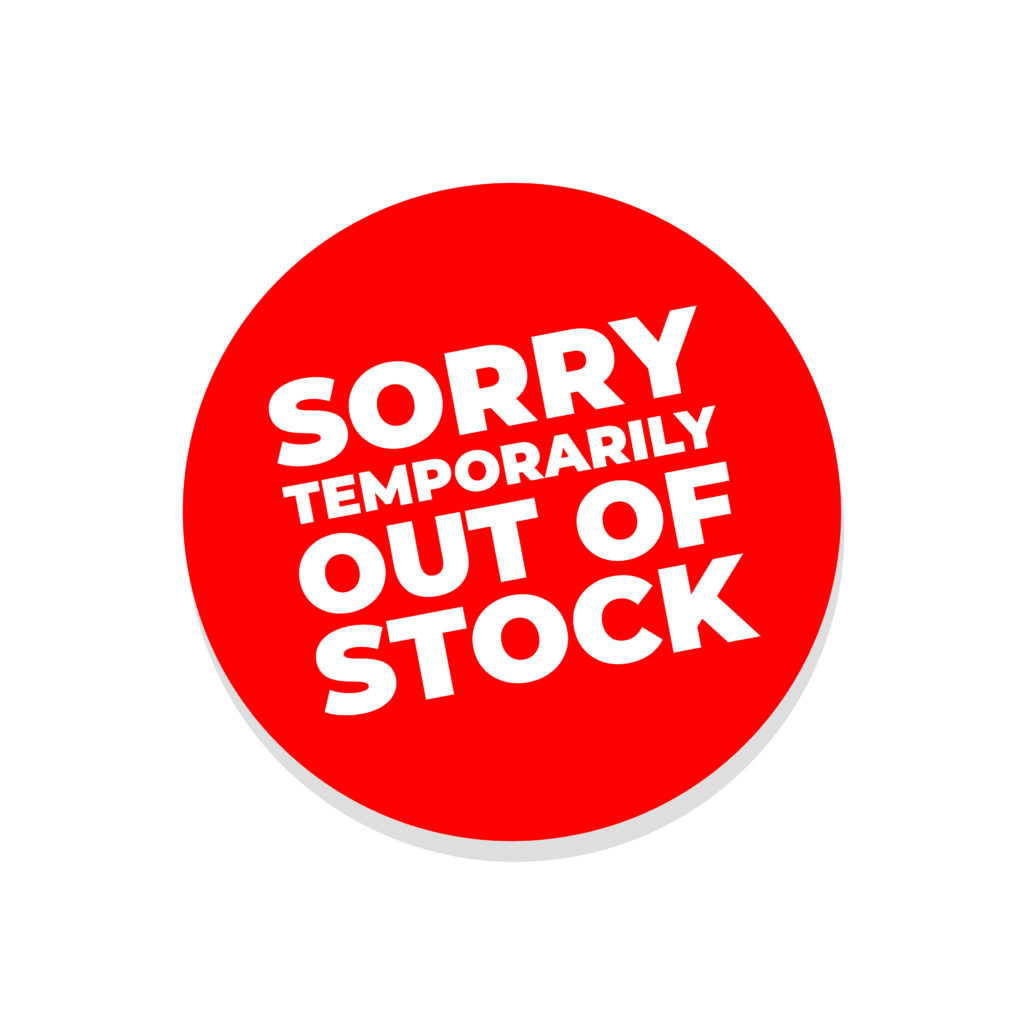Your inventory is the backbone of your business. As we discussed in a recent post, shortages erode customer loyalty and retention. At the same time, without proper inventory management, those same products on your shelf carry hidden liabilities.
Heavily stocking your shelves for any eventuality can lead to a product sitting for a prolonged period of time, exposing them to damage, spoilage, theft, or raising the need to dispose of products in clearance sales or landfills. To avoid the pitfalls of being over or understocked, you need to find the Goldilocks zone through inventory management techniques.
What is Inventory Management?
Quite simply, inventory management is the process of monitoring stock levels and the movement of goods. It is one of the most vital components of supply chain management, and yet 43% of small businesses fail to track their inventory and U.S. retail operations have, on average, a supply chain accuracy of just 63%.
Inventory management encompasses the process of ordering, storing, using, and selling a company’s products. It is crucial to know when items need to be restocked, the rate inventory is moving at, and the price point to set it at. With each business having unique needs, there are several different inventory management strategies to choose from.
WMS for Inventory Management
Before choosing the strategy that is right for your operation, it is crucial to have a warehouse management system (WMS) in place.
With the right WMS in place, you have receipt of new goods and scan-by-scan tracking / reporting at your fingertips. Using a system like the K.Motion Warehouse Edge allows you to create cycle counts and empty bin checks to ensure an accurate picture of your stock on hand, and provide date stamps for every touch.
As you will see, each inventory management method relies heavily on tracking the products coming in and out of your facility and attempting to do this with a manual paper and pencil system is risking serious human error.
Let’s dive into the most utilized inventory management methods at your disposal…
Method 1: ABC Analysis

Learning your ABC’s is not just for those in grade school, it’s also the most common technique for inventory management. ABC analysis is a method by which you assign a value to the company that each product holds. “Class A” being your most important stock keeping units (SKUs) and “Class C” being the least important. With each item assigned a value, your company can prioritize inventory level. to make sure that the right items are stocked at the right quantity.
Step 1: Gather Data
Any documentation your business has kept on your inventory’s sales history, usage rates, and purchase prices is key to this step. Assemble all the data points you can.
Step 2: Assign a Value to Each Item
Multiply the annual sales of a product by its cost. The number you get is your annual consumption value. What will start to come into focus quickly are the goods that are high priority – Class A.
Following the Pareto Principal, your “Class A” inventory is an 80/20 split. That means any item that make up only about 20% of your total inventory while consisting of approximately 80% of your annual consumption value.
Class B is your medium SKUs. They should make up about 30% of your total inventory while being 15% of your annual consumption value.
Class C are the items that make up approximately 50% of your total inventory but only 5% of your annual consumption value.
Step 3: Organize Your Inventory
Once each item is placed in a class, you can utilize your precious warehouse space and resources to meet the demands of your ‘A’ products while lowering inventory levels on Class B and C. Additionally, with this inventory management technique, you can price in-demand to better reflect their market value.
Method 2: FIFO Inventory Management
First-in, First-out (FIFO) inventory management is a method where the first products that come into your warehouse are the first ones to be shipped out. Say you have 100 laptops arrive in your facility on week 1. Week 2, you receive an additional 250 laptops. Then on week three you get an order to ship 75 laptops. When it comes time to pick the order, your team will pull from the first 100 laptops to fulfill the request.

FIFO is an invaluable method if your facility handles goods that are subject to spoilage or obsolesce whether it be the food and beverage sector, apparel, or electronics. But even if your products shelf life is not a risk, FIFO is a valuable inventory management method in the age of inflation.
Let’s go back to the hypothetical laptop business. When the factory produced the first 100 laptops, the CPU in each unit cost $90. Due to shifts in the market, the next batch you recieved had CPUs that cost $110. By selling the older units first, you give yourself room to readjust your prices as the manufacturing costs fluctuates.
Optimizing Your Warehouse for FIFO
A warehouse management system offers default FIFO allocation and replenishment, eliminating any risk of human error.
Equipping your facility with gravity flow racks ensures a fool-proof picking strategy. Think of it like the shelves on a vending machine. With a gravity flow racking system, the oldest units are at the front of the hypothetical vending machine. When the oldest is picked, gravity rolls the second oldest unit to the front of the shelf to await the next order.
A gravity flow rack requires a layout that will allow your employees to load new units on one side and pick old units from the other. If your space does not allow for this, alternatives such as live pallet racking, drive-through – compact pallet racking, AR shuttle racking, and carton flow picking systems can be effective structures for running a FIFO facility.
Labeling is also crucial to a successful FIFO operation. With a warehouse management system, a quick scan of each SKUs barcode tells you use-by / expiration dates. It also displays when an item was recieved in the facility.

Method 3: Demand Forecasting
Another useful inventory management technique is demand forecasting, a process by which you use your proprietary data to predict customer demand for a product. This data is assembled from your company’s sales analytics, marketing analytics, and financial analytics.
With this inventory management tool, your company can anticipate the demand for products and eliminate the risk in overstocking or understocking. You can also stay ahead of your supply chain, ensuring that what you need arrives on time and does not take up space in your warehouse for prolonged periods.
Types of demand forecasting
The three most widely used demand forecasts are time series analysis, regression analysis, and casual models. While we will not get into the weeds on each method in this post, each lets you plan ahead in different ways – like knowing the outside temperature, wind speed, and chance of precipitation when planning around weather.
Method 4: Safety Stock Management
Safety stock is the inventory you keep on hand to ensure your facility can meet peak demand. If your warehouse carries solely items such as toothbrushes that do not have a seasonal demand, using a safety stock system may not be necessary. However, if your warehouse carried say tooth brushes (steady sales year-round) and pool floaties (higher demand in the summer months), the latter may benefit from a safety stock system.

Inventory which does not have seasonal demand but may be prone to lead-time uncertainty, think about those laptops again and the recent semiconductor shortage, also benefit from safety stock management. Allocating additional space to such products ensures that even when there is a delay on your receiving end you still have the stock to fulfill orders.
Calculating Safety Stock
Figuring out the level of safety stock you have on hand comes down to knowing your average daily demand for a product, the time it takes to restock the item, and the acceptable service level of stock availability. Products with higher demand should carry a higher priority when it comes to stock availability.
If your average daily demand is 25 units, the restock time is 8 days, and your desired service level is 90% a simple formula is 25 x 8 x 0.90 (service level becomes a decimal form) your safety stock would be 180 units to cover your customer demand should delays occur. Safety Stock formulas are not one size fits all and there are more in-depth measurements we could use, but the above is a good rule of thumb.

Method 5: Just-In-Time Inventory
Where safety stock management can protect against supply chain delays, just-in-time inventory (JIT) is all about maximizing reliable supply chains. JIT is a method of bringing in products only when they are needed. In a manufacturing environment, this means bringing in the raw components on the days they are needed for assembly. When it comes to finished products in your warehouse, a popular method of just-in-time inventory is cross-docking which we talked about in recent posts here and here.
It’s a lean management process which allows you to reduce storage costs and personnel levels through carrying less inventory at any given time.
Shifting to a JIT operation
The first step to a successful JIT inventory management system is to streamline your procurement and stocking systems. Small flaws can have major ripple effects when operating with minimal inventory on hand. Use data to determine reliable supply chains within your product line. Knowing your lead times is vital. So to is predicting customers purchasing plans, which is why demand forecasting (method 3) works hand-in-hand with JIT.
Once running a JIT operation, using a warehouse management system to closely monitor inventory levels is crucial.

Method 6: SKU Rationalization
SKU rationalization is all about reducing the number of stock keeping units your warehouse carries. It is an inventory management technique that optimizes product selection while reducing costs associated with storage. It also increases your efficiency when it comes to ordering and fulfillment.
Think about that uneasy feeling when you walk into a restaurant that has page after page after page of options – seemingly every meal you could imagine is on offer, leaving you wondering if they generalize so much, is the kitchen actually good at any one dish? That’s the thinking behind SKU rationalization. If your warehouse is only offering the products your customers want, it allows your team to specialize in delivering on that demand.
Conducting SKU Rationalization
Like the other inventory management systems, SKU rationalization begins with your company’s data. Sales figures, customer reviews and feedback, as well as the cost of producing/procuring and marketing the product needs to be analyzed. From there your company can decide which SKUs should be kept, modified, and removed from your product line based on customer preferences and profitability. A product that has a high customer satisfaction rating but low sales figures can be just as beneficial as a product with high sales figures when it comes to your company’s brand identity.
A company should schedule regular SKU rationalization to ensure the products on your warehouse’s shelves are fulfilling your customers needs and wants.
Automate your Inventory Management
As you can see, to properly implement an inventory management solution you need accurate data. A warehouse management system is crucial to giving you both macro and micro oversight of your product line. Without proper data, building a system that works for your businesses needs is like playing darts in the pitch dark.
